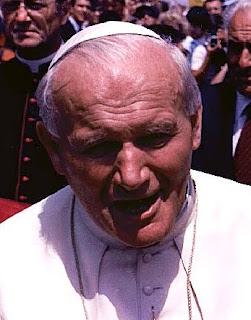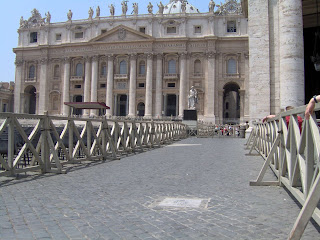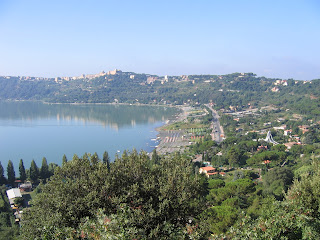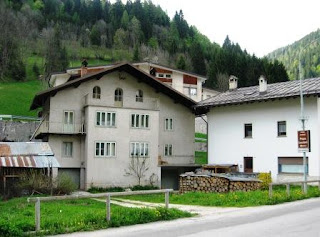Ballroom talent has been springboard for business success
 |
| Simone Di Pasquale is a regular on the Italian TV show Ballando con le Stelle |
Ballroom dancer and television celebrity Simone Di Pasquale was
born on this day in 1978.
In 2005, he became a household name after he started to
appear regularly on Italian television in Ballando con le Stelle - the equivalent of the US show Dancing with
the Stars and Britain’s
Strictly Come Dancing. The annual show, presented by Milly Carlucci, is broadcast
every Saturday evening on the tv channel Rai Uno during the season.
Pasquale has also appeared in numerous other television
programmes, on stage in musical theatre and as an actor in a television drama.
Born in Rome, Di Pasquale learnt ballroom dancing at a young
age and took part in competitions.
In 2000 he paired up with the dancer Natalia Titova, who
also later became a celebrity because of Ballando con le Stelle. The couple were engaged from 1998 to 2005.
They took first place in the competition Rising Stars UK in
2004.
In the first season of Ballando con le Stelle, Di Pasquale
partnered the Italian actress Hoara Borselli and the couple won the
competition. He has taken part in each successive series since. The 2018 season
of the show is due to begin on March 10 and will be broadcast live on Rai Uno every Saturday night.
Di Pasquale has appeared as a guest on numerous
programmes on Italian television and had a role in an episode of the long
running crime series, Don Matteo.
 |
| Di Pasquale and actress Hoara Borselli won the first series of the Ballando con le stelle competition |
He has also appeared on many famous stages in the musicals,
Saturday Night Fever and Hairspray: Fat is beautiful!
Di Pasquale has dance schools in Rome, Florence, Milan, and
Bologna and runs the company, Twister Entertainment, which organises events and
dance and entertainment initiatives.
He presented the final of the European Championship of Tango
in 2013, which was broadcast from Rome on Rai Uno and he also was part of the
Canadian tour of Ballando con le Stelle in 2014, which was renamed Dances with
Milly.
In January 2018, he was production director for the
prestigious La Notte delle Stelle, a pro-am dance competition held at the Parco
dei Principi in Rome.
 |
| Mussolini had hoped his new stadium in Rome would host the Olympic Games in 1944 |
Travel tip:
Ballando con le Stelle is broadcast from Rai's studio in
Piazza Lauro de Bosis close to Foro Italico in Rome. Formerly named Foro
Mussolini, the Olympic Stadium was built between 1928 and 1938 to a design by
Enrico del Debbio and Luigi Moretti inspired by the Roman forums of the
Imperial age. The purpose of the prestigious project was to secure the Olympic
Games of 1944 for Fascist-run Italy, although in the event there were no Games that year because of the Second World War.
 |
| The Villa Borghese gardens date back to 1605 |
Travel tip:
The pro-am dance competition produced and directed by Di
Pasquale in January was held at the Grand Hotel Parco dei Principi, which is in
one of the most prestigious locations in Rome, on the edge of the Villa
Borghese gardens and close to the Via Veneto. The beautiful Villa Borghese
gardens date back to 1605 when Cardinal Scipione Borghese, nephew of Pope Paul
V, commissioned the work to turn a former vineyard into the most extensive
gardens built in Rome since the days of the republic.
More reading:
Marco Delvecchio - the footballer who became a dance show star
Italy's Strictly Come Dancing judge Bruno Tonioli
Flavia Cacace - the Strictly star famous for Argentine tango
Also on 27 February:
1935: The birth of opera star Mirella Freni
1950: The birth of fashion designer Franco Moschino
1964: Italy appeals for help in Leaning Tower scare
Marco Delvecchio - the footballer who became a dance show star
Italy's Strictly Come Dancing judge Bruno Tonioli
Flavia Cacace - the Strictly star famous for Argentine tango
Also on 27 February:
1935: The birth of opera star Mirella Freni
1950: The birth of fashion designer Franco Moschino
1964: Italy appeals for help in Leaning Tower scare
(Picture credits: Stadio dei Marmi by Blackcat; Borghese Gardens by Jean-Christophe Benoist; via Wikimedia Commons)


















